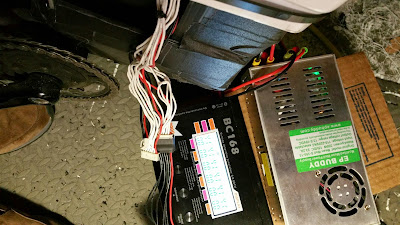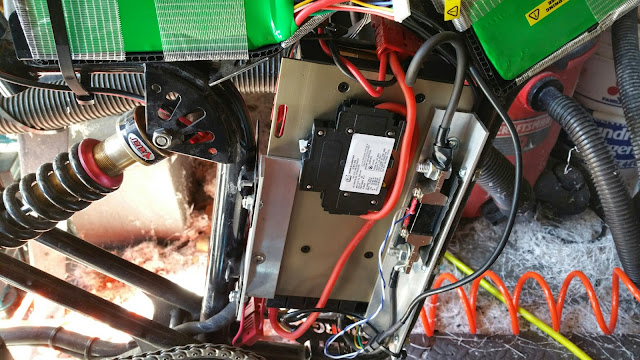Alan B
100 GW
Noticed some slight imbalance on the Borg battery pack (Turnigy 18S 20AH), so I'm balance charging it to 4.10 using then BC168 charger at 2.0 amps after getting it to 4.0V with the bulk charger.

erik_m said:How many watt hours is your battery system? What range do you get?
I am really glad that the 24 MOSFET controllers don't heat up too much since your controller is in your compartment. I sent you a PM about the fact that I am looking for a place to buy a 24 MOSFET controller. When I was researching Edward Lyen it said something about someone hacking his email, so I am scared to email him. I will read about the Sabvoton and check out Jeremy Wolf aka zombiess, also.
How long did it take you from the time you bought your frame until the time you put CroBorg into service? [b:3m28al6b][i:3m28al6b]Such[/i:3m28al6b][/b:3m28al6b] an epic rig!





icecube57 said:The ones i suggested should be able to handle much more that what you put in there.
